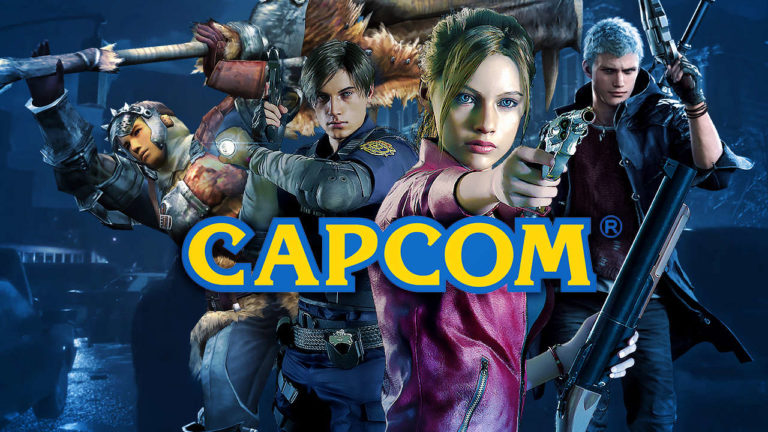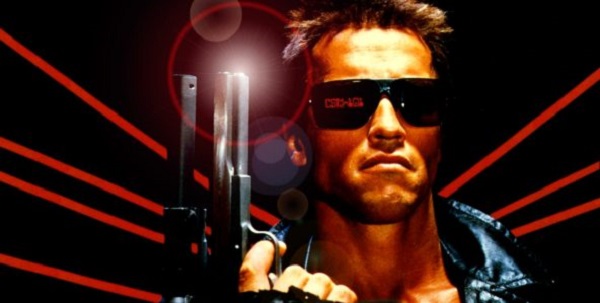
“I’ll be back.” With the utterance of those immortal words, Arnold Schwarzenegger helped catapult James Cameron’s 1984 sci-fi horror flick The Terminator into a legendary pantheon of classic films, and movies buffs to this day consider it to be one of the most significant films of the 20th century. Its at-the-time unique blend of cyberpunk tech noir and classic slasher horror has since gone on to influence innumerable other works in the genre which speaks to the quality and timeless appeal of the world that Cameron crafted from the lingering threads of a fever-induced nightmare. With the release of Terminator Genisys, the fifth film in the franchise as well as the first one to be released in 6 years, looming on the horizon, I figured now’s a better time than ever to look back at this hallowed franchise and examine both its cinematic appeal and effectiveness as an inspiration for video games both vintage and current. Without further ado, let’s dive into the The Terminator! Please note that the opinions offered in this piece are not representative of Rely on Horror as a whole, and are merely personal thoughts.
Film Retrospective:
There’s not much to say about this movie that hasn’t already been said a million times over, but whether you love, hate or are ambivalent to it, it’s hard to ignore the achievements in filmmaking that The Terminator accomplishes on a (relatively) small budget. Although it can hardly claim to have invented the slasher genre, it certainly added a new twist by swapping out the tried-and-true nigh-implacable killer that’s a mainstay of the genre for a malevolent android sent from the future on an extermination mission. This gave context and narrative purpose for its relentlessness and invulnerability that could be explained beyond “possibly supernatural” (lookin’ at you, Leatherface and Jason Voorhees) and allowed the special effects team to subtly add new layers of terror to the proceedings by gradually peeling back the layers of the mechanical menace to provide glimpses at its now-iconic endoskeleton within.
On the subject of antagonists, while The Terminator was hardly the first film to utilize a psychotic computer (in this case, the bleeding-edge ultratech known as Skynet which manages to successfully plunge the world into nuclear armageddon) as its ultimate antagonist (2001: A Space Odyssey’s HAL9000 has it beat by more than 15 years), it must be noted that The Terminator is a film that plays off of cultural zeitgeist to subliminally invoke terror in its audience while at the same time commenting on political issues. In many ways, The Terminator is to North America what Gojira was to Japan: a critical analysis of the dangers of science (with a focus on nuclear warfare, albeit Gojira was from a post-WWII perspective while Terminator sets its sights on late-Cold War M.A.D. tension) that gives the film a time capsule appeal (moreso than the painfully 80s garb that the future Private Hudson and Shao Kahn are wearing before being mugged by the titular bot, at least).
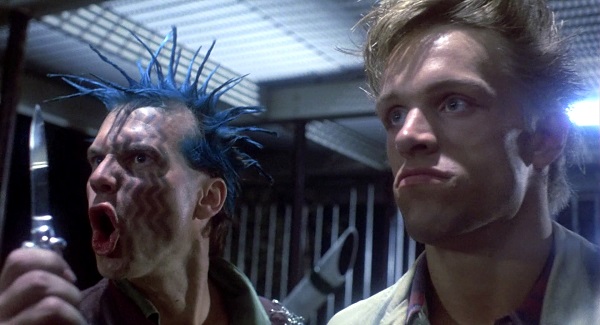
If I had to criticize one aspect of the film, it’d be the special effects. While they still manage to evoke the same kind of uncanny valley unsettling quality that they’re supposed to, time has not been kind to the stop-motion, rubber face budget techniques that resulted from the low budget, leading to it looking like something out of a 60’s Harryhausen flick at times. Still, when all’s said and done there’s a reason why The Terminator holds a coveted 100% approval rating on rottentomatoes.com, and what it lacks in timeless effects it makes up for with its slick visual aesthetic (the scene at the appropriately-named Tech Noir nightclub is particularly dazzling), strong characters and performances, and unforgettable soundtrack (DUNUN DUN DUNDUN! DUNUN DUN DUNDUN!).
The Terminator and gaming:
Given that The Terminator was released at a time when video gaming was just starting to recover from the great crash of 1983 and enter into the cultural mainstream, it’s not a stretch at all to assume that many of today’s game developers who grew up watching movies and playing games around this time were inspired by what many perceive to be one of the best films of the decade. Speculation aside, its distinctive thumbprint is evident on several games made since its release, and even some that you wouldn’t expect.
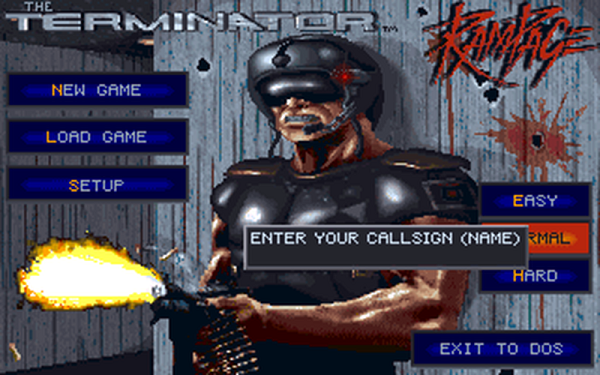
To kick things off, let’s talk about a series that’s been making the headlines recently: Interplay and Bethesda’s retro-science fiction shooter/RPG Fallout franchise which had its fourth numbered installment unveiled last week. Little-known fact: before striking gold with The Elder Scrolls and taking over Fallout from Interplay, Bethesda’s biggest claim to fame was developing a series of licensed games based on the Terminator franchise for DOS platforms back in the early 90s. Their history with the franchise, along with a variety of easter eggs, quotes and references from the series present in the Bethesda-developed Fallout games has caused some to speculate that the dystopian future depicted in The Terminator was an inspiration for Fallout’s wasteland setting, along with the stated inspirations of the Mad Max film series and Cormac McCarthy’s novel The Road. Hell, even before Bethesda was involved in the series the influence of Terminator was still very clear, as noted by a recruitable companion in Fallout 2 who was literally just a less-evil version of the Skynet AI, even sharing the same name.
Another recent game series that was clearly influenced by Cameron’s opus is Hotline Miami, which includes loving shout-outs to the franchise amidst its multitude of other references to the 80’s culture from which it draws its aesthetic. A mission based on the climactic raid on the police precinct in The Terminator (quite possibly its most iconic scene as well as the one in which the immortal “I’ll be back” line was uttered) is present in BOTH games in the Hotline Miami series: “Assault” in the first game and “Final Cut” in the second (bonus points to “Final Cut” for framing the rampage around extremely similar circumstances as in the film, complete with the target woman being guarded by a pair of higher-ranking policemen than the rest of the cannon fodder mooks).
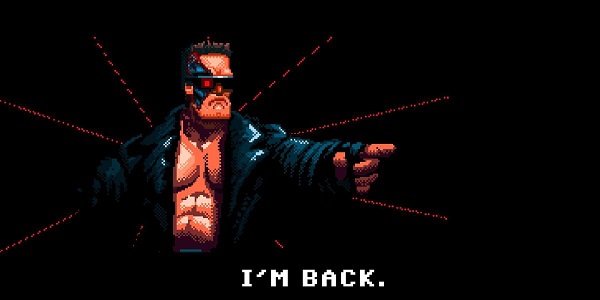
In addition, the structure of games such as Resident Evil 3: Nemesis and Alien: Isolation owe a lot to the type of horror that The Terminator helped pioneer. Both feature unkillable opponents who relentlessly stalk the player character, who themselves are powerless to do anything but encroach their pursuit until they have the means to survive a proper confrontation. Also present are the various games which are simply content to make sly nods and homages to the film and its characters, such as Banjo-Tooie’s robotic doppelganger Mingy Jongo (complete with red-eyed endoskeleton) and Guild Wars’ familiar-looking Annihilator Golem. Upcoming indie game Broforce even includes the Terminator amongst its roster of playable characters, with its characteristic resilience represented by an invincible upgrade that reveals its endoskeleton.
That’s all for part one of this retrospective, but there’s still more to come! I’ll be back next week for a look into one of my favourite films of all time, with a new article every week until Genisys’ release.

